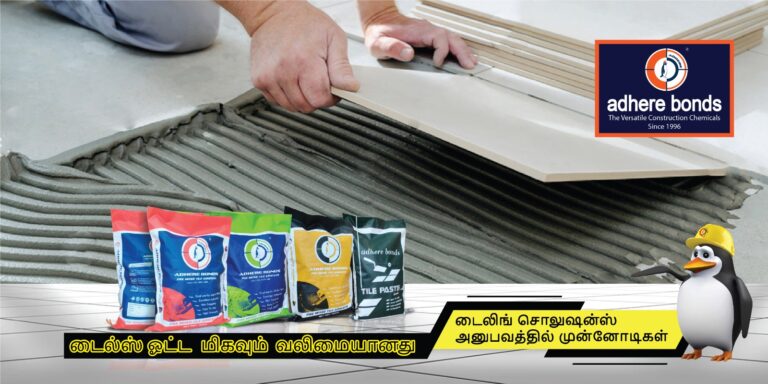
Tile Adhesive
Excellent performance, highly polymer modified, high strength, flexible tile adhesive for fixing vitrified tiles and glass mosaics in interior and exterior situation. Suitable for walls and floors. is non-slip and water resistant.
A Beginner’s Guide to Tile Adhesive: What You Need to Know
When it comes to tiling a space, whether it’s a bathroom, kitchen, or living room, one of the most essential materials you’ll need is tile adhesive. While it may seem like a simple product, choosing the right adhesive for your project is key to ensuring that your tiles stay securely in place and your surface looks beautiful for years to come.
In this blog, we’ll dive into everything you need to know about tile adhesive—what it is, the different types, and how to choose the best one for your project
What Is Tile Adhesive?
Tile adhesive is a bonding material used to fix tiles to a surface like floors, walls, or ceilings. It creates a strong bond between the tile and the substrate (the material you’re tiling onto), preventing movement and ensuring that the tiles stay securely in place. Without it, your tiles could shift, crack, or even come loose over time.
Types of Tile Adhesive
There are several types of tile adhesives, each suited to specific needs. Let’s break them down:
1. Cement-Based Adhesive (Thinset)
This is the most commonly used tile adhesive. It’s a powdered mixture that needs to be mixed with water before application. Cement-based adhesives are versatile and work well with most types of tiles, including ceramic, porcelain, and natural stone. They’re ideal for both walls and floors and offer a strong, durable bond.
- Best for: Most ceramic, porcelain, and stone tiles.
- Pros: Strong bond, affordable, and available in different formulations for specific needs (e.g., flexible, rapid-setting, etc.).
- Cons: Needs mixing, takes longer to cure.
2. Ready-Mixed Adhesive
This type of adhesive comes pre-mixed and is ready to use straight out of the container. It’s an easy option for DIYers, especially for smaller tiling jobs. Ready-mixed adhesive is great for lighter tiles and is often used in dry, interior areas.
- Best for: Lighter tiles like ceramic, used in dry, indoor areas.
- Pros: Convenient and easy to use.
- Cons: Not suitable for heavy-duty or wet areas, less durable than cement-based adhesives.
3. Epoxy Adhesive
Epoxy adhesive is a powerful, two-part adhesive that’s mixed before use. It’s highly resistant to moisture, chemicals, and extreme temperatures, making it perfect for high-traffic areas, wet zones like showers, and even commercial spaces. Epoxy creates a tough, durable bond that’s extremely long-lasting.
- Best for: Wet areas, commercial spaces, and heavy-duty applications.
- Pros: Extremely durable, moisture-resistant, long-lasting.
- Cons: Can be more expensive, difficult to work with, and requires more preparation.
Compatablity on Adhesive: The requirements of BS. 5980: 1980 minimum (The United Kingdom) “Specification for adhesives for use with Ceramic Tiles and mosaics”.
MIXING: Add clean water to ADHERE BONDS-TOT and mix thoroughly until a lump-free mortar is obtained. A 20 kg bag will require approximately 7 liters of water
